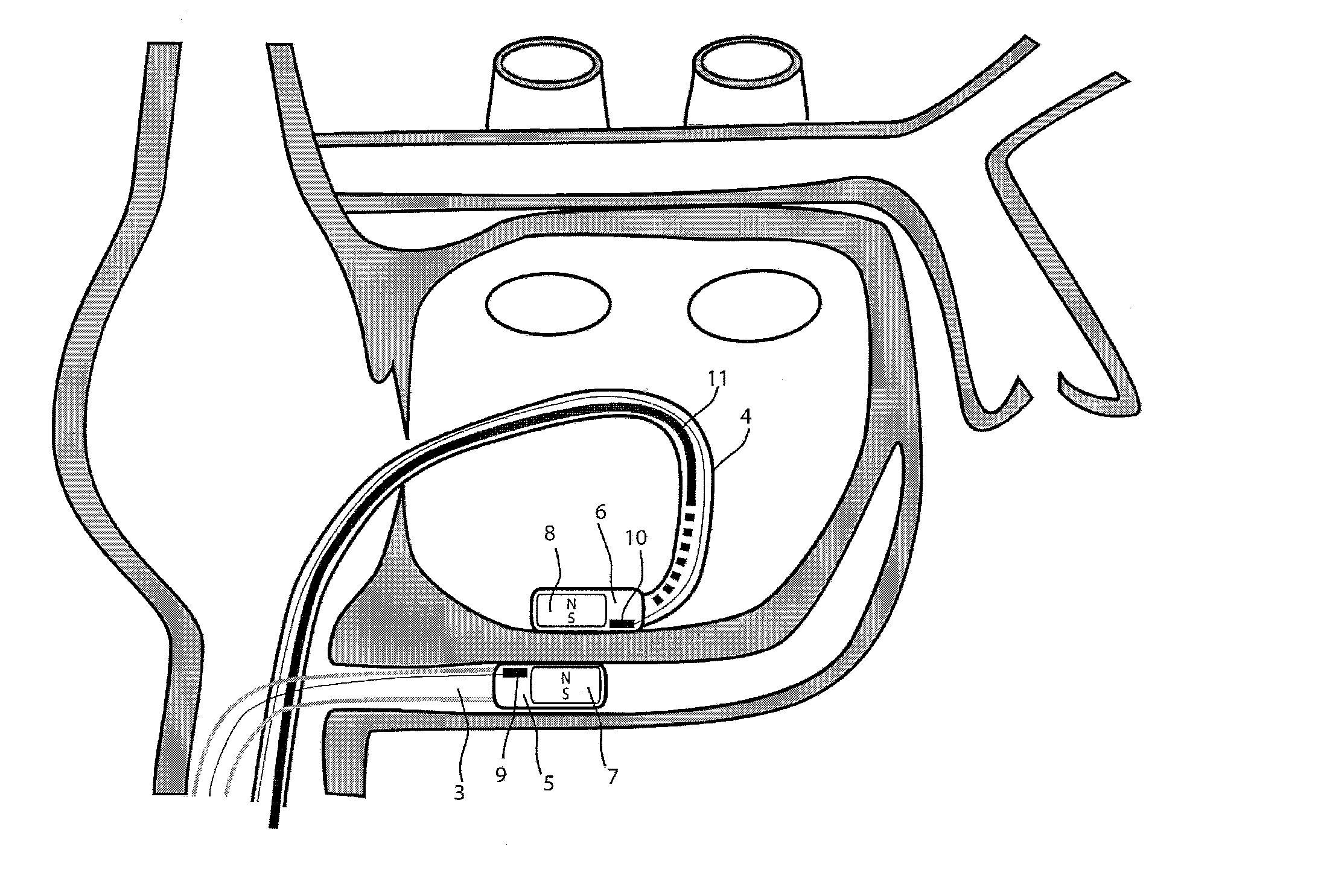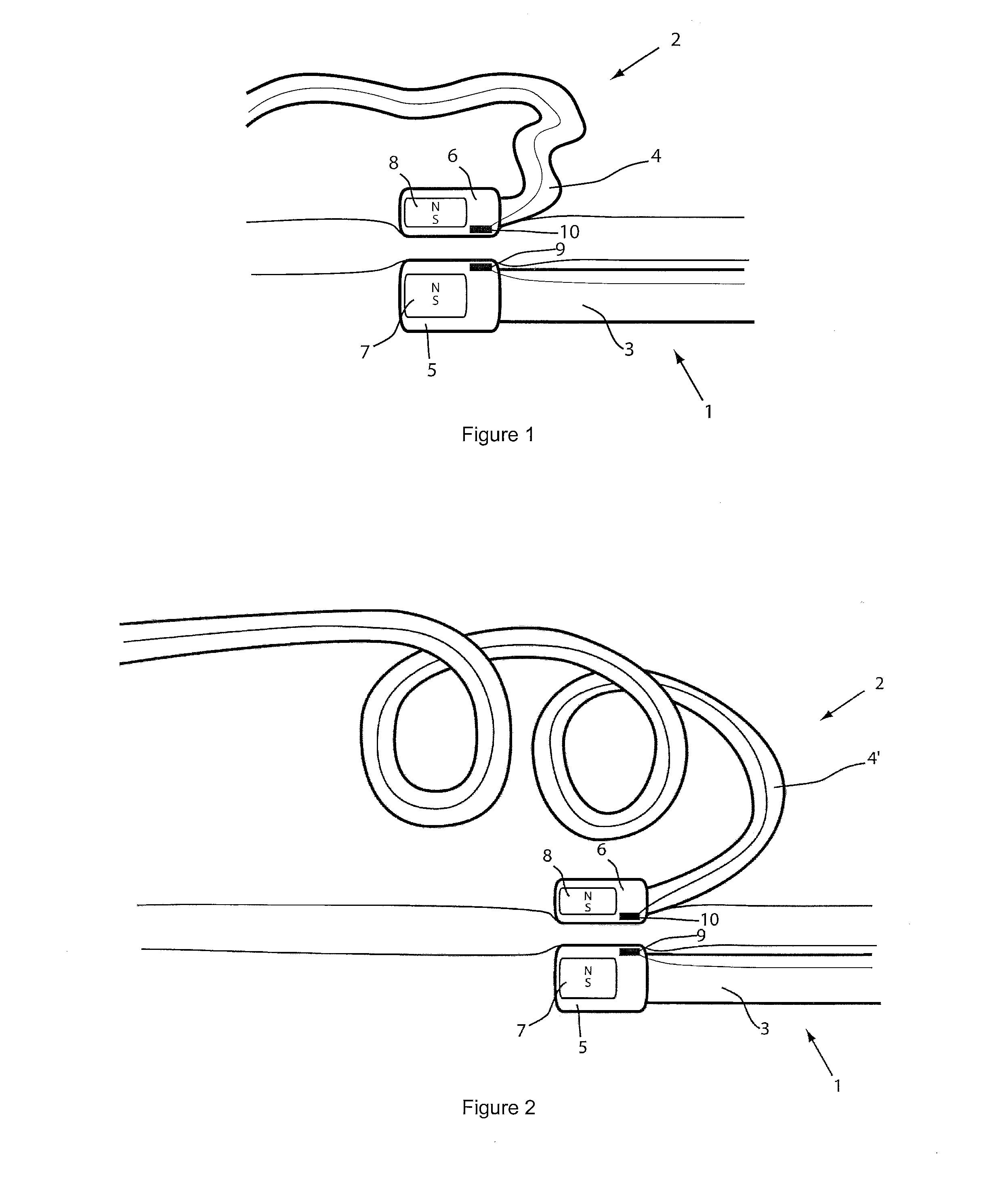Medical device for tissue ablation
a medical device and tissue technology, applied in the field of medical devices for tissue ablation, can solve the problems of heart failure and stroke, undesirable or intolerable side effects, and excessive heart beat, and achieve the effect of reducing the ability of the atria
- Summary
- Abstract
- Description
- Claims
- Application Information
AI Technical Summary
Benefits of technology
Problems solved by technology
Method used
Image
Examples
Embodiment Construction
[0038]For the basic description of the device according to the invention, reference is made to WO 2008 / 010039 mentioned above in the present specification and incorporated in its entirety in the present application.
[0039]A first problem one has been confronted with when using the system described in WO 2008 / 010039 mentioned above is the “guidability” of the guided member. As indicated and described in this incorporated prior art, the idea then was to provide a system with two elongated members, used in particular for ablation, having at their distal end at least a magnet or a magnet arrangement for a magnetic coupling of said distal end when they are brought close together. Experiments with prototypes of the system described in the WO 2008 / 010039, show that the guiding member should be more rigid than the guided member to allow a proper functioning of the system. In fact, it was observed that the less rigid or the more flexible the guided member is, the better it follows the guiding...
PUM
 Login to View More
Login to View More Abstract
Description
Claims
Application Information
 Login to View More
Login to View More - R&D
- Intellectual Property
- Life Sciences
- Materials
- Tech Scout
- Unparalleled Data Quality
- Higher Quality Content
- 60% Fewer Hallucinations
Browse by: Latest US Patents, China's latest patents, Technical Efficacy Thesaurus, Application Domain, Technology Topic, Popular Technical Reports.
© 2025 PatSnap. All rights reserved.Legal|Privacy policy|Modern Slavery Act Transparency Statement|Sitemap|About US| Contact US: help@patsnap.com



